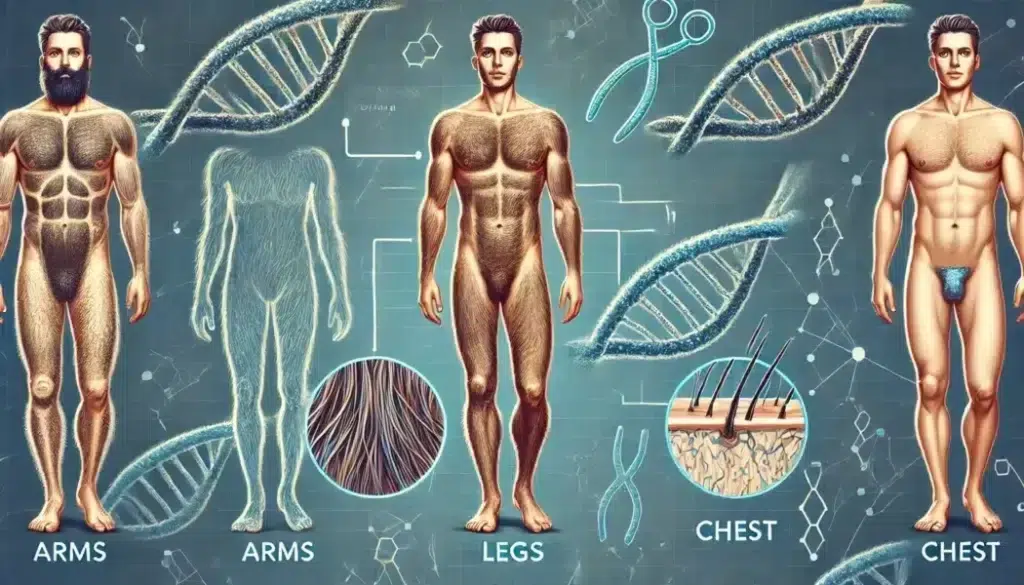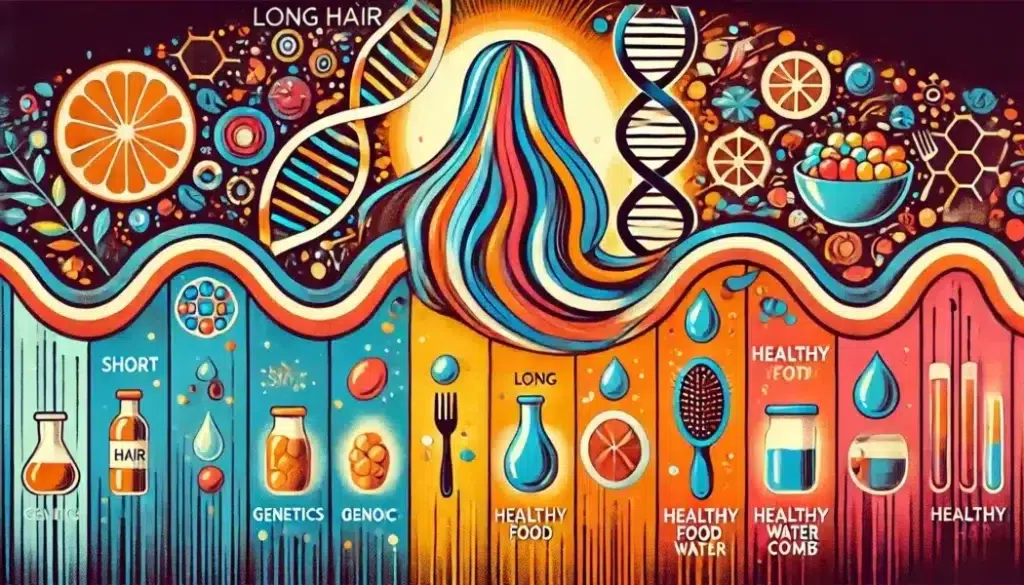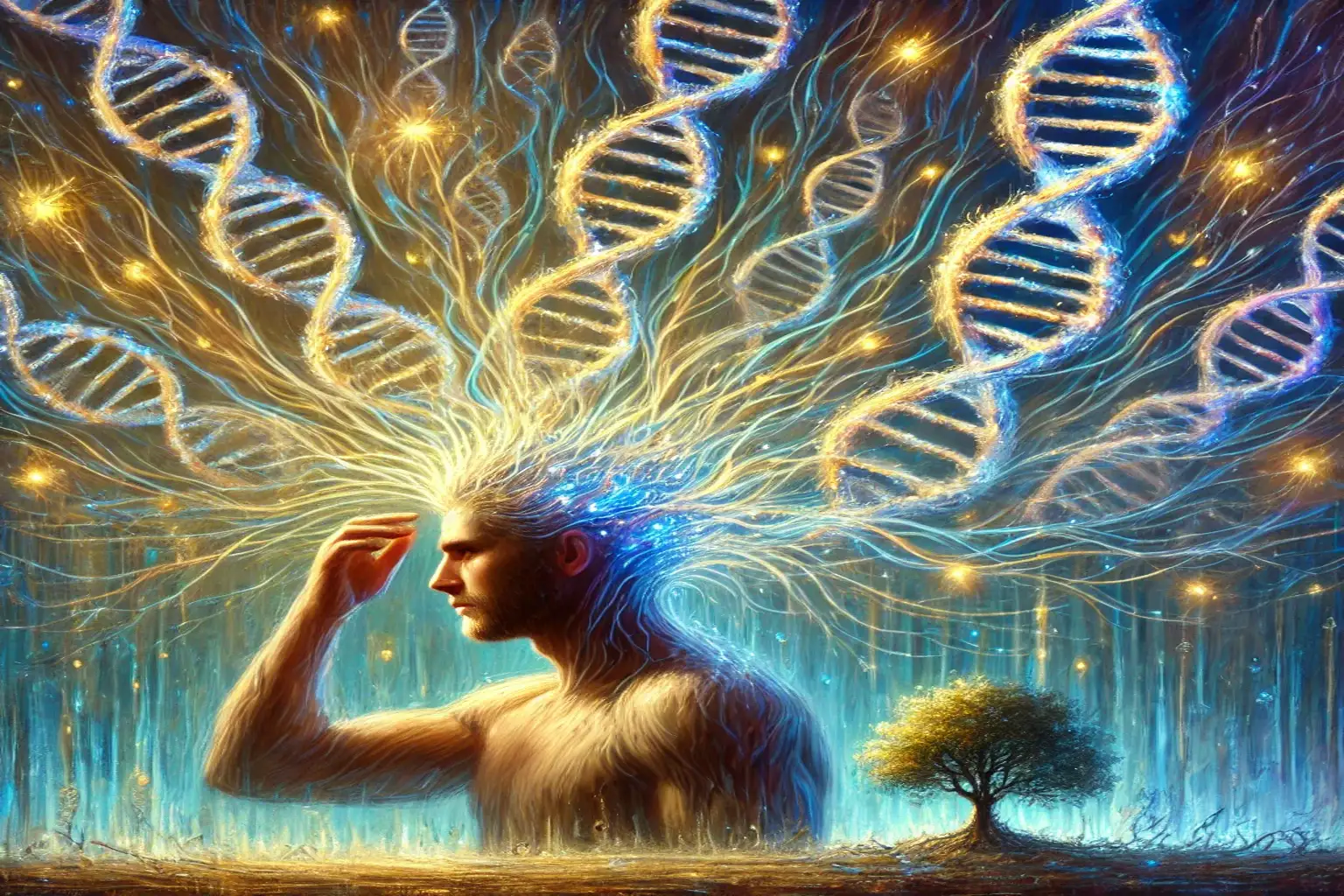Genetics are pretty much the big boss when it comes to how our hair behaves. Hair growth cycles, which include phases like growth, rest, and shedding, are all driven by our DNA. Some folks have genetics that favor longer growth phases, leading to longer and thicker hair naturally. Others might find their hair reaches a certain length and then just stops growing.
When it comes to the traits of your hair—think texture, color, and density—your DNA is calling all the shots there too. Genes like MC1R play a role in determining hair color, while others influence curl and pattern. Inherited from both mom and dad, the genetic mix you get decides how those locks turn out.

Many people wonder if they inherit their hair from their mother or father. The truth? It’s a team effort. Both parents contribute to the genetic pool for hair traits. So, while your dad may have a luscious mane, you’ll still want to thank or side-eye both parents for your own hair.
Recent research has linked specific genes, like those in the FGF (fibroblast growth factor) family, to variations in hair growth patterns. These discoveries not only peel back the curtain on why we have the hair we do, but they also open up potential pathways for future treatments, for issues like thinning hair or even baldness. Pretty exciting stuff!
🧬 Beyond the Scalp: Genetics and Body Hair Growth
Genetics don’t stop at the scalp. They also play a huge role in determining the amount and distribution of body hair. Ever wondered why some people have more body hair than others? It’s often the handiwork of genes influencing the way hair grows elsewhere besides your head.
Genetic differences among ethnic groups often explain variations in body hair. Some people, due to their genetic lineage, have denser or more widespread body hair naturally. It’s all in the chromosomes you get from your family tree!

For those dealing with conditions like hirsutism (excessive hair growth) or alopecia (hair loss), genetics might be behind them, too. These conditions can often be traced back to specific genes that throw the body’s typical hair growth patterns out of whack.
And then there’s the hormonal factor. Genes have a say in how your body uses hormones like testosterone, which can ramp up or tone down body hair growth. This genetic play between hormones and hair is intricate and can explain why some areas of the body are hairier than others.
📏 Length and Beyond: The Long Hair Paradox
While genetics definitely determine a lot about hair, how long it can get might surprise some folks. Genetics are part of what limits or blesses your hair with length. The growth phase mentioned earlier is critical here—longer growth phases usually mean longer hair.
Many people believe that having long hair is simply tied to your family tree. While it’s true genetics set the stage, there are other factors at play. Environmental aspects, diet, and care practices can also affect just how long those strands can grow.

Genetic mutations sometimes mix things up regarding hair potential, occasionally enhancing or limiting growth. So, if you see someone with Rapunzel-like locks, it’s a combination of good genes and other similar aspects like consistent care.
Understanding your genetic predispositions can actually help tailor your hair care routine. Knowing you have potential for longer hair might encourage you to adopt practices that help maintain hair health, like using the right products and avoiding excessive damage.
While the science of genetics provides insights, remember there’s flexibility based on lifestyle and care habits. Embrace what nature’s given you, and work with it to achieve the hair you rock best.
🛡️ How to Prevent Hair Problems
While genetics play a significant role in hair growth and health, it’s also crucial to recognize the impact of avoidable risk factors. One major factor is stress, which can disrupt the hair growth cycle and lead to excessive shedding. Managing stress through relaxation techniques, exercise, or mindfulness can help mitigate this effect.
Smoking and exposure to polluted environments also contribute to hair damage. Smoking reduces blood flow to hair follicles, depriving them of essential nutrients, while pollution can lead to scalp irritation and clogged hair follicles. Limiting these exposures can go a long way in maintaining hair health.

Alcohol consumption is another habit that can negatively affect hair. Excessive drinking depletes the body of vital nutrients, such as zinc and folic acid, which are essential for healthy hair. Moderation is key to ensuring your hair gets the nutrients it needs.
Additionally, an imbalanced diet lacking in proteins, vitamins, and minerals can weaken hair strands and slow growth. Incorporating nutrient-rich foods like leafy greens, eggs, nuts, and fish can fortify hair from within.
Repairing Hair Damage with Modern Solutions Despite the challenges, modern hair care methods offer effective solutions for repairing damage and promoting growth. Laser therapy, for example, stimulates hair follicles using low-level light, improving blood flow and encouraging new growth. It’s a non-invasive treatment suitable for various hair types.
Another effective approach is the use of supplements specifically formulated for hair health. Products containing biotin, collagen, and other essential nutrients can help strengthen hair and improve its resilience.
For those dealing with hormone-related hair issues, DHT-blocking lotions can be particularly beneficial. By reducing the effects of dihydrotestosterone on hair follicles, these products help prevent further hair loss and support regrowth.
Combining preventive measures with these advanced treatments can help you achieve healthier, stronger hair. Embrace the options available and make choices that best suit your hair’s unique needs.
Stronger hair starts with daily choices. Learn 8 proven habits backed by research that fuel growth from within. Download your free PDF guide now!

✅ FAQ Section for Post: How Genetics Influence Hair Growth
❓ What role does the FGF5 gene play in regulating hair length?
The FGF5 gene acts as a “stop signal” that tells hair follicles when to exit the growth phase (anagen). If FGF5 is suppressed or mutated, hair can stay in the growth phase longer, resulting in extended hair length. Some researchers are exploring ways to safely inhibit this gene to encourage stronger, longer growth.
❓ Is hair growth inherited more from the mother or the father?
Although many believe that hair traits come primarily from the mother’s side, the truth is more complex. Hair growth and loss patterns are influenced by multiple genes from both parents. Male pattern baldness, for example, is polygenic and can be inherited from either side of the family.
❓ Can rare genetic hair disorders provide clues for normal hair growth?
Yes, rare conditions like Loose Anagen Syndrome or Uncombable Hair Syndrome offer valuable insight into hair biology. These disorders involve mutations in genes responsible for anchoring or shaping the hair shaft. Studying them helps researchers understand the genetic mechanisms behind healthy follicle function.
🧾 Last updated: June 2025 based on latest research.


Leave a Reply